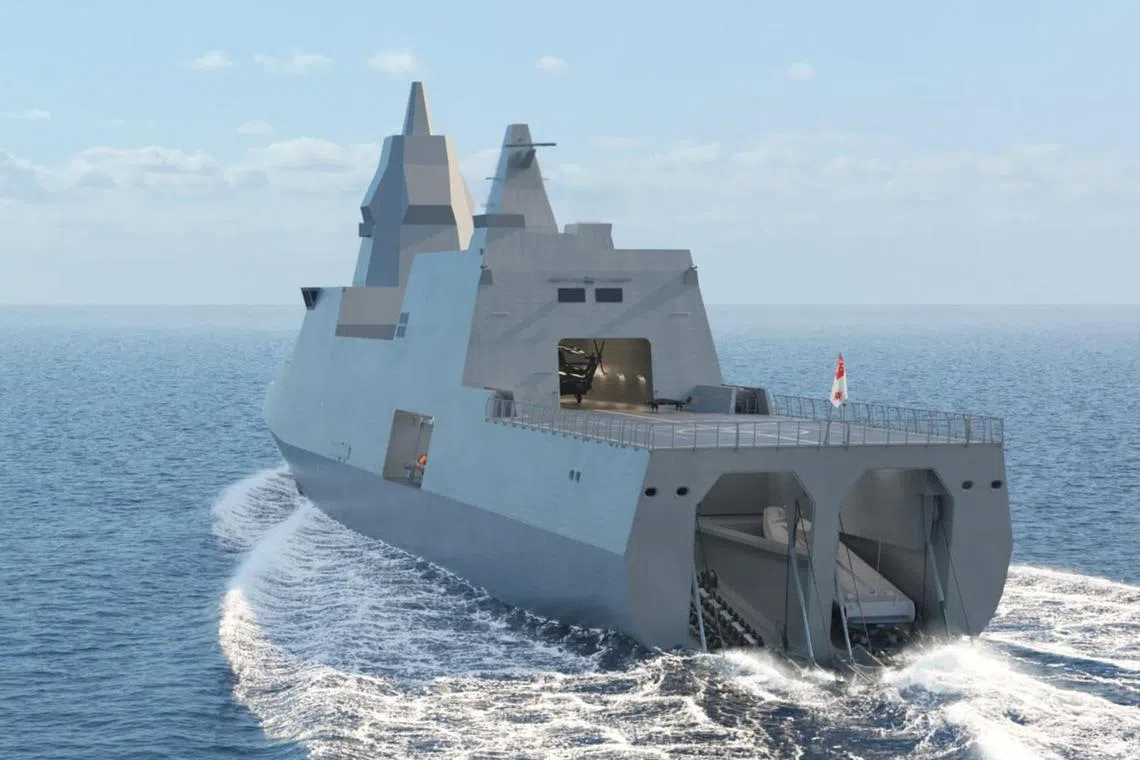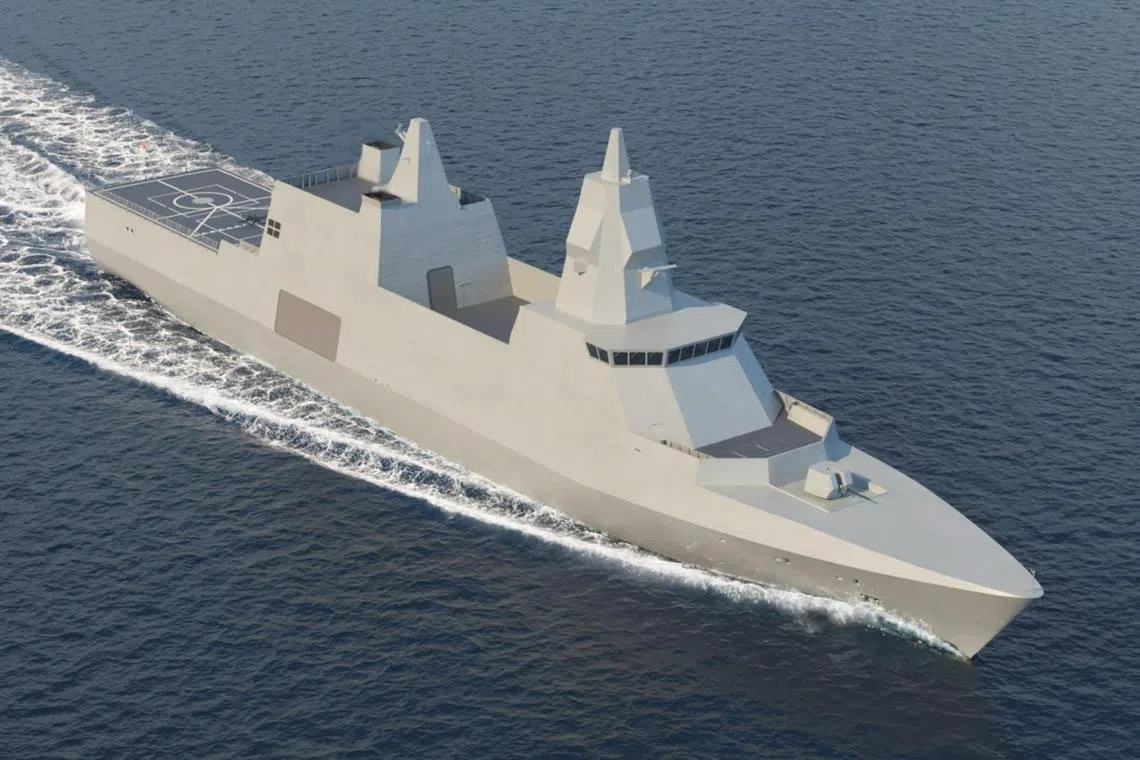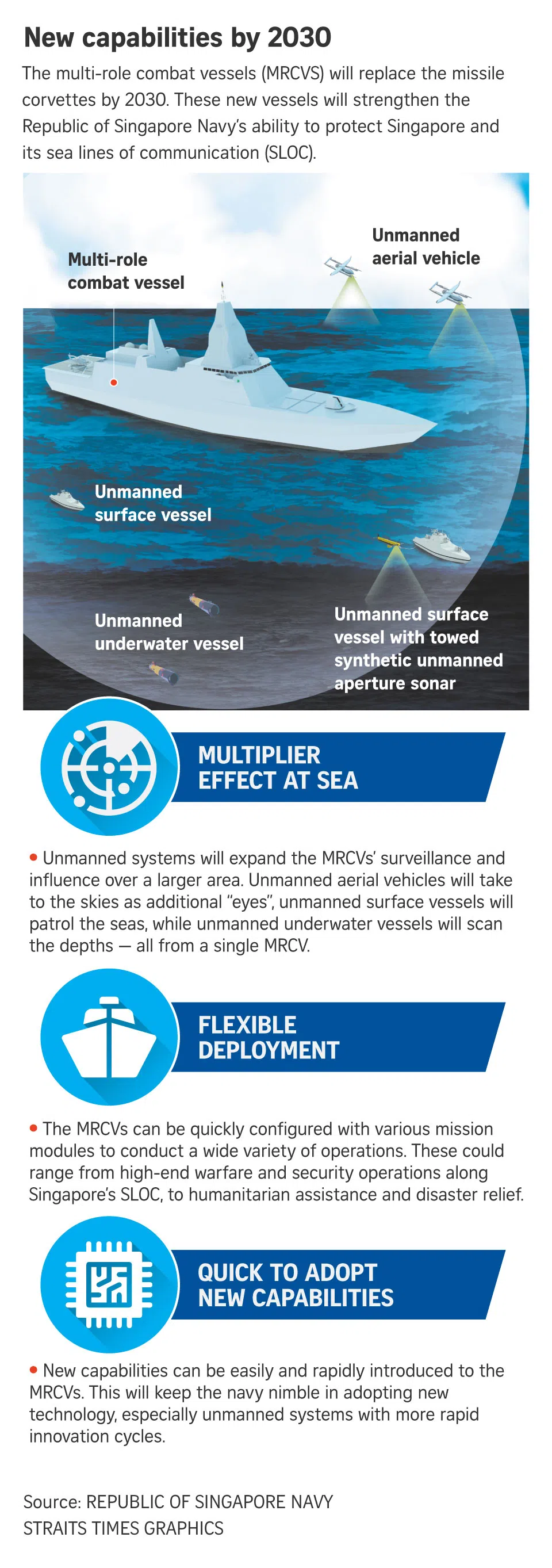New multi-role combat vessels to act as force multiplier for S’pore navy
Sign up now: Get ST's newsletters delivered to your inbox

A 3D rendering of the new Multi-Role Combat Vessel.
PHOTO: REPUBLIC OF SINGAPORE NAVY
Follow topic:
SINGAPORE – The Republic of Singapore Navy (RSN) will acquire six new multi-role combat vessels (MRCVs) to replace its ageing fleet of Victory-class missile corvettes (MCVs), which have been in service since 1989.
The newer vessels will not be a like-for-like replacement, said the RSN.
“The MCV was designed for the 1980s and served its purpose very well. But the threat environment in the 1980s versus the threat environment in 2040 will be very different,” said RSN Major James Lim, the operations lead of the MRCV project, in a media briefing on April 27.
Here are five things to know about the new MRCVs:
1. Integrating unmanned system capabilities
In addition to being capable fighting ships, the MRCVs will act as a mothership for unmanned systems.
They function as a force multiplier for the navy fleet, as unmanned drones positioned on the ship expand the area that the ship can oversee.
The unmanned systems can range from air to surface to underwater vehicles. “But at the baseline, the unmanned systems on board the MRCVs will include surveillance capabilities,” the RSN added.
2. Staying flexible
Currently, many of the RSN’s platforms are geared towards handling specific tasks.
Going forward, the RSN will no longer design type-specific platforms, but rather, systems and ships that are modular in nature.
“(These) allow us the dimension and flexibility to span the entire conflict spectrum,” said Maj Lim.
To do this, the RSN is building a modular platform that will equip the MRCVs with the capability and versatility to handle multiple situations.

In addition to being capable fighting ships, the MRCVs will act as a mothership for unmanned systems.
PHOTO: REPUBLIC OF SINGAPORE NAVY
3. New threat environment
The RSN fleet will be equipped to face emerging threats, as well as engage in both conventional and unconventional warfare.
“We still have cases of conventional war, in the case of Ukraine and Russia. But we also see (incidents) whereby there are certain actions taken by state and non-state actors that... fall below the threshold of war,” said Maj Lim.
He added that the sea, in particular, is a likely arena of contest because it is where many of the parties interact frequently.
4. Doing more with less
Given Singapore’s declining birth rate, sailors manning the ships in 20 years’ time will have to do so with about 30 per cent less manpower, said the RSN.
Digitalisation and unmanned systems will help the RSN to continue operating its fleet at full capacity.
“All these... allow us to operate the ship with much less manpower. The human element comes in in terms of last-mile decision-making,” said Maj Lim.

5. Completion date
Construction of the new vessels will be overseen by the Defence Science and Technology Agency, which is the overall programme manager and systems integrator.
Sweden’s Saab Kockums and Denmark’s Odense Maritime Technology will help design the broad form of the ship by this year, making sure the ship is large enough to accommodate the RSN’s requirements. Both firms have experience designing vessels for their respective navies.
Detailed design work will commence by early 2024. This will include the internal construction, such as laying of cables and pipes.
ST Engineering will help construct the vessels, which are on track for delivery progressively from 2028.

